Strategic Branding: Guide to Brand Strategy
Strategic Branding is a marketing strategy that allows brands to communicate their messages in distinct ways and help customers find a product or service. In other words, strategic branding aims to build strong brands that are easy to remember and easily understood by customers so they can easily find a product or service to buy.
Many brands need a clear identity that can serve as the basis for the strategic decisions that guide how they market and communicate with their target audiences. This article will help you identify your brand's positioning, target customer segments, and competitive strengths and weaknesses so that you can develop an effective brand strategy to reach your goals. By the end of this guide, you will be able to answer essential questions about your brand, including: Why does your brand matter? Who is your target audience? What makes your brand different? How do you plan to differentiate your brand?
Brand strategy is more than just the name of the game – it's a journey with multiple steps and stages that must be carefully planned and executed to reach the goal.
In this article, we will cover how to define your brand, how to position it, how to make sure you are consistent and how to ensure the brand stands out.
Table of Contents
What Is Strategic Branding?
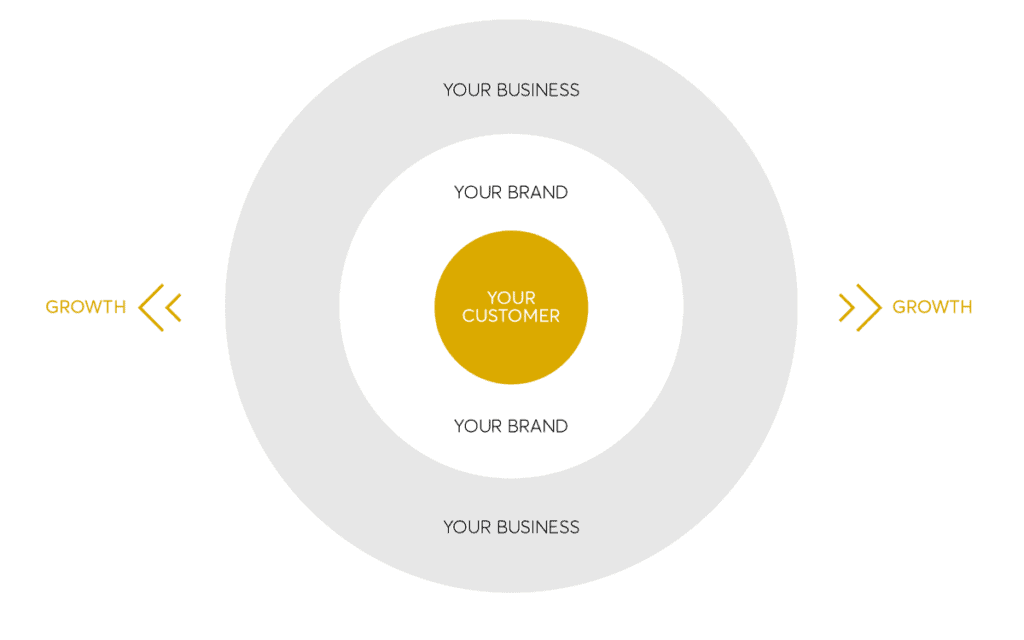
Strategic Branding is about using a variety of tactics, including logo design, packaging, colour choices, and marketing, to promote your business and build recognition. The combination of these elements creates a unified message that is both memorable and consistent. This helps to reinforce a brand that your customers associate with positive feelings, such as trust, confidence, and value.
Building a recognisable brand is not easy, but it will help you get more followers and grow your brand. To collect ideas and trends and plan posts, brands use the social media calendar as one of the main tools in digital marketing and building brand recognition.
As you'll see, each brand element plays a role in creating a solid brand identity. For example, your logo and visual style can help communicate your brand's personality, while the colours of your packaging and marketing materials convey information about the quality of your products.
When you're designing your branding, remember to be specific. The more targeted your message is, the more effective it will be.
There are many different ways to brand your products and services. These include:
- Logos and Visual Style
- Packaging and Labels
- Colour Choices
- Marketing
How your brand looks is the first step in creating an overall identity that stands out from competitors. A good logo design is simple and intuitive but not too simple or complex. In addition to a recognisable logo, your brand should include an identity style that will work across different mediums. If your business sells multiple products, consider creating a consistent brand style.
When it comes to marketing, it's crucial to clearly understand your target audience, where you want them to go, and what they expect to find when they get there. The goal is to ensure your messaging is consistent and matches the characteristics of your target market. This way, you'll attract customers who will buy your product or service and return for more.
Does Strategic Branding Matter in Today's Market?
In today's economy, the quality of your products and services is more critical than ever. Your company must stand out because many companies sell the same products and services.
For this reason, strategic branding is even more critical. Your products and services are your most valuable asset, so you must put your best foot forward to make a name for yourself.
The best brands are built on a solid foundation of customer satisfaction. This begins with the quality of your products and services and extends to how your company is perceived.
Your company's brand should be consistent in all of its elements. You can build a reputation that attracts customers by consistently delivering on your promises. This will help you stand out in a competitive market.
Why Is Brand Strategy So Important?

Brands have become more than just products; they're part of our everyday lives. We interact with them daily through TV, radio, print, and social media; in many cases, they influence us more than any other product or company. The brand strategy allows you to manage the expectations that your brand sets in the minds of your audience.
The brand strategy includes everything a business does to create, maintain, and promote its brand. It consists of marketing, from traditional advertising to brand management, including customer service. Brand strategy is the foundation for how a business interacts with its customers and the public.
Here are five reasons that brand strategy is essential:
- Consumers increasingly use brands as a proxy for quality.
- Your brand is your company's most valuable asset.
- Companies need brand loyalty to thrive.
- Brands are the primary source of information about your business.
- Brands have an impact on society.
It's important to consider how your brand interacts with other brands, your competitors, and the marketplace in general. Every interaction with your brand is an opportunity to increase brand awareness, loyalty, and trust. It's also a chance to differentiate your brand from competitors.
You should align your brand strategy with your overall business strategy. In other words, if your business strategy is to grow sales in one region of the country but not another, your brand strategy must support that goal.
The Benefits of Strategic Branding
Here are some ways that strategic branding makes sense for you:
- Gives you a competitive edge. When potential customers see your logo design or tagline, they'll be reminded of the experience they're looking for.
- It allows you to target your ideal customer. When prospective clients see your logo, tagline, and product or service, they can envision themselves using it. This is important when targeting your ideal customer because it will make them more likely to buy your product or service.
- Drives awareness and sales. People see your brand everywhere, so they'll be more likely to associate your business with what you sell.
- It helps your company stand out in a crowded market. When people find your company on social media or websites through online searches, they'll know what to expect when they visit your site or pick up the phone.
Elements of a Brand Strategy

A brand strategy is a long-term approach to positioning your company's identity and creating the right customer experience.
A brand strategy is the set of decisions a brand team must make before launching a new product or service. These decisions include the following:
- What does the brand represent?
- Who are the primary customers for this product?
- How will you market this product?
- What message do you want to convey to consumers?
- What kind of quality do you need to deliver to customers?
- What is the end goal of your marketing plan?
In addition to the above questions, there are six steps that every brand team should follow when developing a brand strategy:
- Define your brand vision
- Define the brand purpose
- Define your brand values
- Identify your target audience
- Define your brand positioning
- Develop your brand strategies
The first step in a brand strategy is to define your brand vision. Your brand vision is the statement that describes the unique selling proposition (USP) that makes your brand memorable. When someone thinks of your brand, they should immediately consider your USP.
Next, you should define your brand purpose. The brand purpose is the reason why your brand exists. It's the purpose for which you created your brand. Without this purpose, your brand is just a business that sells products and services.
After you've defined your brand purpose, it's time to explain your brand values. Your brand values are the guiding principles that will direct your brand strategy. They include everything that distinguishes your brand, such as the image, personality, tone, colours, and messaging.
You should also know the key attributes that define your brand. They include unique selling points that make your brand distinctive.
Finally, you should identify your target audience. This is the demographic that your brand is intended for. Your target audience is the group of people that will buy your products and services.
Once you've identified your target audience, it's time to create your brand's positioning statement. Your brand positioning statement is the summary of your brand purpose, brand values, and brand attributes. It includes the overall goals that your brand is trying to accomplish.
Consider the Types of Brand Architecture
Brand Architecture is structuring your brand through an organised approach that provides a framework for brand messaging, branding, marketing, and communications.
Brand architecture is a critical concept in business strategy and marketing. It's how brands are built and the basis for building a solid business identity that attracts customers and keeps them returning for more.
The brand architecture approach begins with your mission statement and vision and guides you through defining what your brand stands for, how it will evolve, and whom it will target.
Once you've defined your brand and mapped out the strategies, products, and services that will help deliver that message to your audience, you'll need to communicate and promote your brand so that all stakeholders know and understand it.
Brand architecture has four main elements.
- Strategy: What does your brand stand for?
- Identity: Who are you?
- Experience: How will you deliver your brand's promise?
- Culture: How will you be different from other brands?
All four of these elements work together to build a powerful brand. In this section, I'll explain Brand Architecture, how it can help shape your strategic branding, and how to integrate it into your marketing and communications strategy.
Strategic Branding Process
1 – Understand Your Brand's Purpose and Goals
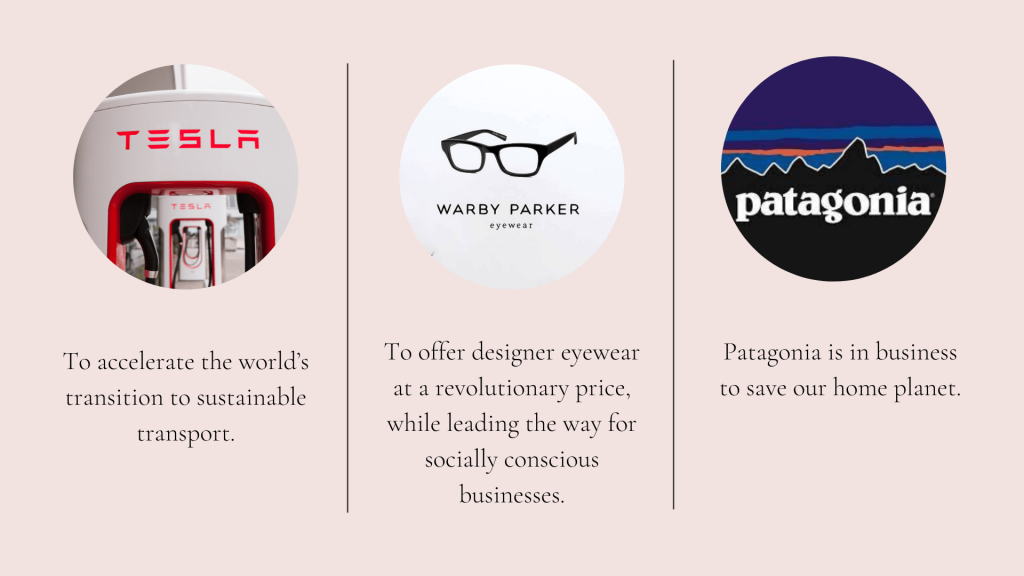
Strategic brand positioning and messaging help to achieve the desired goals. Combining the product and the digital marketing leads to the desired goals.
You should consider three main goals when working with your brand positioning. These include the following:
Value Proposition
The value proposition is the basis of your brand and describes what sets you apart from other brands in the market. For example, what are your services or products good for, what makes them unique, and why do they matter to your customers?
Positioning
Positioning is what makes you different from other brands in the market. It includes everything your customers see and hear when interacting with your brand. If you're a mattress company, this could be your brand's tagline, the colour you use to represent your brand, and the logo on your packaging.
Message
The message is how your brand is communicated with your customers. It includes the tone and language of your content and the type of media you use to communicate your message.
When developing your brand's value proposition, position, and message, it's essential to understand what your business does, what it aims to achieve, and why it matters. Your brand's purpose is the foundation upon which everything else is built.
How Does Your Brand Make a Difference?
Your brand's positioning, value proposition, and message are the key components that determine your brand's success. When creating your brand's positioning, value proposition, and messaging, consider your brand's goals for its customers. This is the basis of your brand's value.
Here are a few questions to ask yourself as you start to develop your brand's positioning:
- Does your brand have a unique, value-driven positioning consistent with your business's core values?
- Do you stand for something, and why does it matter to your customers?
- Are you able to communicate your brand's message with your customers?
What Should You Say About Yourself?
You can answer these questions by using strategic brand messaging to communicate what your brand stands for. The answers you come up with are the basis of your brand's positioning, which, in turn, is the basis of your brand's value.
To find out how your brand's positioning, value proposition, and messaging differ from your competitors, consider asking yourself the following questions:
- What do your competitors' positions and messages say about their companies?
- What are your brand's positioning, value proposition, and message?
- What are your brand's strengths, and how do you make your strengths stand out from the crowd?
- How does your brand serve the customer better than any of your competitors?
- How are your brand's positions, values, and messages different from your competitors?
- Where do you stand in the market, and what distinguishes you from your competitors?
- Does your brand have a distinctive value proposition that distinguishes it from other brands?
- Are your brand's positioning, value proposition, and message consistent with your business's core values?
In addition to answering these questions, think about the following:
- Does your brand's positioning make a difference? How?
- Does your brand have a memorable, positive message? Why?
- Do your brand's positioning and messaging help your target audiences know what you stand for and your business?
- Does your brand have a distinctive value proposition that distinguishes it from your competitors? Why?
- Do your brand's positioning, value proposition, and message differentiate your business from your competitors?
Brand positioning is a strategic part of your business. It clearly describes your business, what it offers its customers, and why it's crucial.
Understanding the value of your brand, whether for internal marketing, customer engagement, or public relations, is the basis of how you communicate your brand's position, value, and message to the world. Your brand's positioning, value proposition, and messaging are the basis of your brand's value.
2 – Define Your Brand's Image
As you plan your next marketing strategy, you must define your brand's image. Your image should be the foundation of your brand's identity, so choosing wisely is essential.
It's common to believe that your brand's image resembles your company's logo or name. However, they're not the same. Your brand's image is how customers perceive your company, whereas your logo or name is the outward representation of your brand's image.
There are many ways to build your brand's image. While your logo or name communicates the core values of your business, the way people see your brand and your products and services are often determined by the physical design, colours, and images accompanying it.
To choose a strong brand identity that resonates with your customers, it's crucial to understand how your brand's image affects your customer base. Check out this article on VPS Server to see how famous logos resonate and the story behind them.
Image and Perception
Understanding how customers perceive your company is the first step toward developing a powerful brand image. Your brand's image is based on your customers' opinions of your company, products, or services. This is determined by how customers see the product or service and your company's overall look and feel.
How customers perceive your brand can vary depending on various factors, including how they're introduced to you or your products. For example, people might remember your brand if it was featured in a popular television show, movie, or magazine article or if your company was featured in a story shared on social media. If your company is known as the manufacturer of a particular product type, it may be easy to identify your brand based on the images customers see.
Image and Expectations
Customers' expectations of your company's brand are based on how it appears and delivers its product or service. When customers expect a certain level of quality from a particular company, they may associate that brand with high-quality products and services.
For example, if a customer knows your company is a leader in the pet industry, they may assume your company has extensive knowledge of the pets they sell and the products that support your brand.
When a customer is introduced to your brand for the first time, it's common to hear customers ask, “What kind of company sells this?” or, “What kind of products are they?” Their questions indicate how your company's image and brand identity are associated with your products and services.
Image and Experience
Your company's brand image also develops from people's experience with your company. How a person feels about a company is determined by their interactions with it and how its brand image comes across.
A great way to ensure your brand's image is robust is to understand people's experiences with your brand. As part of your brand identity development process, you'll want to ensure that your company's brand image communicates the specific experience your customers expect from you.
By understanding what your customers expect from your brand, you can develop strategies to deliver on their expectations and improve customer relationships.
Your brand's image isn't static, so it's essential to continually review and update your brand identity to stay on top of the latest trends and technological changes.
Is There A Best Brand Image?
Generally, a strong brand image doesn't mean that your logo or name is the only part of your company that people see. It's important to consider how your brand's image is developed and communicated.
As you think about your brand's image, you'll want to ensure it aligns with your company's strategy. Your strategy is your marketing plan's foundation and the primary driver for all your decisions. As a result, your brand's image must be considered part of your overall strategy.
In addition to your company's strategy, communicating your brand's image must align with your overall business goals. For example, if you sell clothing, you may want to use bright colours to emphasise your brand's image. On the other hand, if you sell electronics, you may want to use simple fonts and muted colours to emphasise your brand's image.
3 – Develop Your Brand's Persona
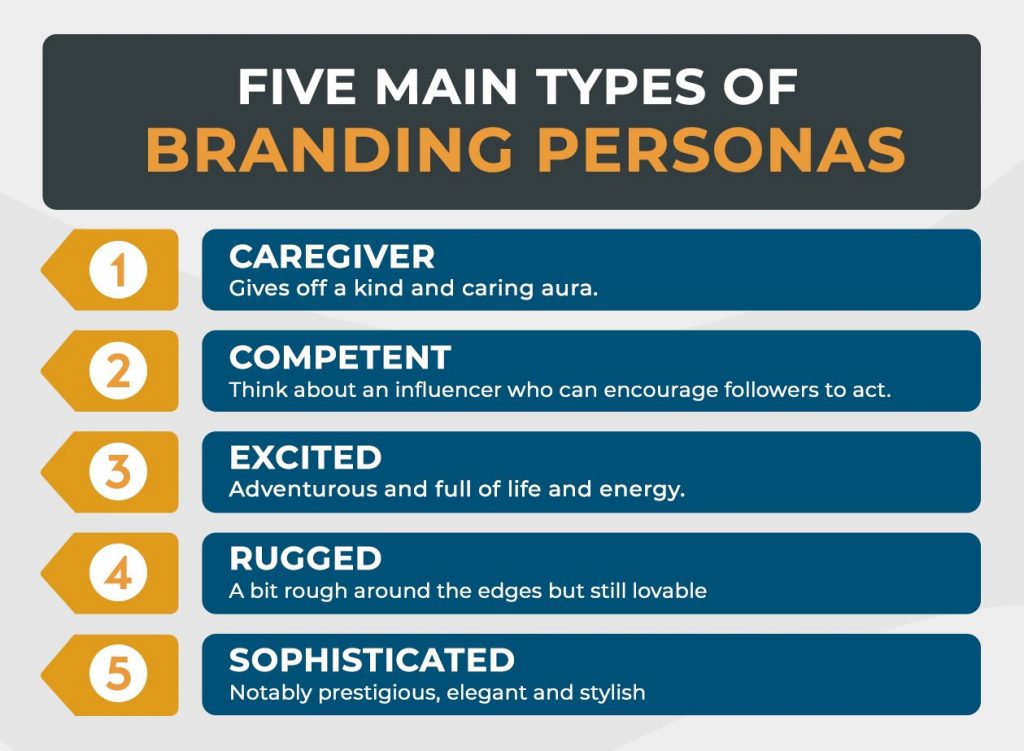
Personas are fictional characters, often used to represent an entire demographic group. In the marketing world, they're used to explain customer behaviour.
Personas offer brands a creative way to understand customers and develop targeted communication strategies (check out the TinyEmail blog for more tips). When appropriately used, personas can help build stronger relationships with potential customers, increasing your chances of getting a positive response and more business.
A persona is a character, often represented by a cartoon drawing or a photograph, who speaks for a group of people in an organisation. It's the fictional representation of a typical customer or client. The brand personality is based on the persona's attributes and preferences, such as income level, gender, lifestyle, and age.
Creating a Persona
Start with research to gather data about your target audience. What demographics do they fit into? Who are they? Who are their friends?
Next, use this information to create a list of critical characteristics. Then, narrow your list to five, seven, or ten that best describe your ideal customer.
Next, identify the top five to seven attributes your persona should have. For example, your persona might be a young professional who spends money on travel, entertainment, and fashion. This means she's more focused on her career than on saving money.
Think about the things you enjoy doing. What are your interests? Do you like travelling? Reading? Working out? Are you an athlete? These interests and those you dislike will help you understand your persona's needs and wants.
Now, it's time to write down your persona's name. Use descriptive words that are short, easy to remember, and memorable.
4 – Curate Your Brand's Tone of Voice

There are many options to choose from regarding the tone of voice. You may only sometimes have complete control over your voice when speaking to customers or prospects. Still, there are many things you can do to create the impression of professionalism and confidence.
In this part, we'll look at ways you can improve your brand's overall tone of voice. We'll also share with you how we curated the tone of voice of our brand and how we achieved our current level of success.
Do You Know Where Your Tone of Voice Comes From?
Your tone of voice comes from several sources. These include your personality, culture, and the way your business works. For example, if you work in a fast-paced environment where you're constantly in motion, the pace of your tone of voice should reflect that. If you tend to speak slowly and clearly, then your tone of voice should match that pace.
It's important to understand where your tone of voice comes from so you can work to improve it. You can do this by observing your voice when communicating with other people and reflecting on what you notice.
Your company's tone of voice needs to be carefully managed. Especially with the rise of generative AI, you must have a process to ensure all produced content is original and on brand. Using an AI content detector can help with this.
Can You Identify Your Audience?
Once you've learned a bit about your tone of voice, you can start to think about your audience. Who are you communicating with? Do they have a background or experience that influences how they receive information? Knowing your audience and their preferences will help you refine your tone of voice to match them.
For example, you're working with an organisation selling a high-end product. In this case, consider your tone of voice carefully.
It would be best to tailor your language and how you present your message to communicate effectively with your audience. If you're communicating with a group of sales professionals, you should make sure that you use specific terms and phrases that they'll understand.
If you're selling to a high school class, your language may need to be less formal.
Does Your Business Fit the Target Market?
Your audience's expectations and needs will also influence your voice tone. The tone of voice that works for a manufacturing company may not work for a restaurant or a law firm.
It's essential to identify the target market you're working with and decide what language will work best for your business.
How Does Your Tone of Voice Stack Up Against Competitors?
Your tone of voice will also influence how your brand compares to others. When you know the kind of language you use and whom you're trying to reach, you'll be able to compare yourself to competitors and see where you stand.
Does your brand have the right tone of voice for your target market? If it doesn't, it may be time to make a change.
For this purpose, you can use a reliable Metronet fibre internet connection. You will get the best help and support to create free logo design options by choosing your colour scheme.
Is it Time to Revise Your Tone of Voice?
The tone of voice is something that evolves. It's a process that involves reflection and experimentation. While starting, it may be best to focus on your personality, culture, and business. But looking at how your brand is doing after a while is helpful.
As you continue learning, you'll better know what works and doesn't. You may also change how you approach specific problems or issues.
For example, you're a business-to-business (B2B) marketing agency working with a client who sells high-end products.
You may have decided your voice should be more casual and conversational when talking to B2B audiences.
This is a valuable strategy for the client because it creates an air of professionalism and is much easier for a B2B audience to understand.
But if you need to progress on your business, it may be time to revisit your voice and find new ways to connect with your clients.
5 – Research Your Audience
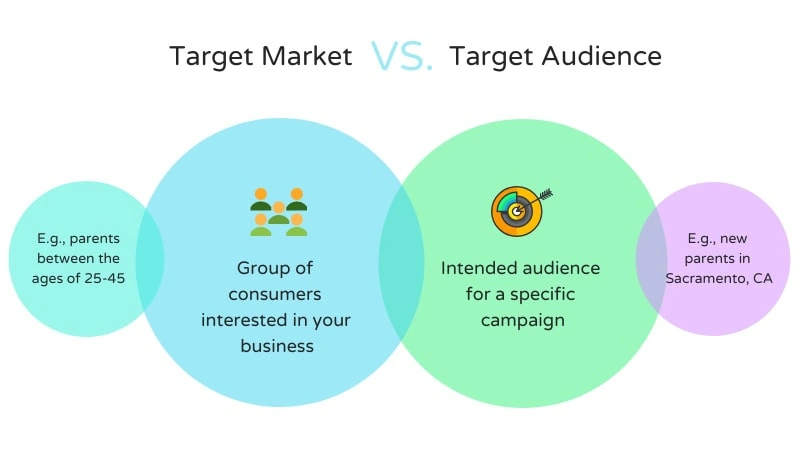
What kind of audience do you want to connect with?
Strategic brand identity identifies the audiences you want to connect with and the messages you want to communicate. When you think about it, this is the first step toward building your brand identity – the purpose of your business.
Consider why you are starting a business and the purpose of your message to your customers. Why are you telling them about your products or services? What will they get out of your product or service? How can you reach out to your audience through your marketing activities?
Think about your target audience. Who are your customers? Where do they live? Are they local or global? Will they be visiting your store or website? These are some of the questions you need to answer to find out the characteristics of your audience.
Once you know your target audience's characteristics, you can consider how to reach them. How are you going to market to them?
Who is your ideal customer? What are their values, their beliefs, and their interests? How would you describe your ideal customer?
What is your competitive landscape? Do you need to differentiate yourself from your competitors? If so, how?
The more information you have, the better you are prepared for your strategic brand identity.
6 – Analyse Your Competitors
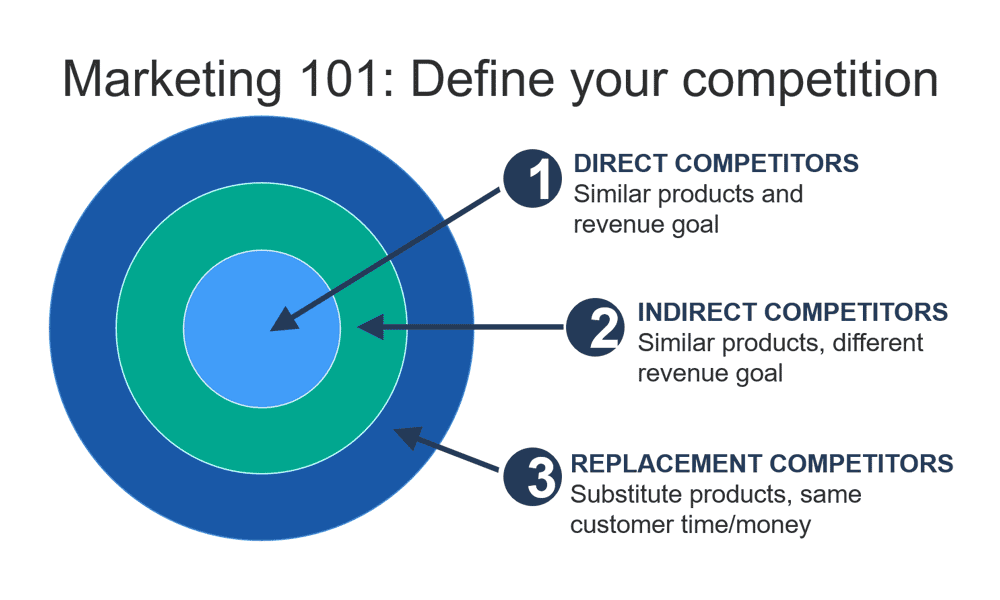
As you know, the competition is fierce in the digital marketing space. You must compete by developing your brand image and keeping it on your mind. Branding involves many things, but one of the most important aspects is that it should be consistent. If you want to stand out in the crowd, your brand voice must be distinct, memorable, and relevant to the target audience.
It would help if you thought about your audience, but not in the traditional sense. Instead, it would be best if you considered who your competitors are. What brands would consumers compare you to if looking for a particular service or product? What can you learn from them? How do they position themselves? What are their strengths? Their weaknesses?
Once you identify the major players, it's essential to analyse them. Are they using the same techniques that work for you, or are they missing something? Do they have an online presence that makes it easy for your customers to find them?
Here are some strategies you can use to evaluate your competitors:
- Analyse their websites to learn what works
- Check out their social media presence, and learn how they interact with their followers
- Learn what their keywords are and how they rank in the search engines
- Get a feel for what other companies like yours have been doing and what they are doing now
Take note of what your competitors are doing and how to leverage the lessons you learn from them.
Conclusion
Consumers have become much more demanding in a world cluttered with brands. They expect businesses to provide them with a clear message, a distinct voice, and a consistent brand experience.
This has created a massive opportunity for strategic branding.
As a result, if you want to create a brand identity that speaks to your customers and makes them feel special, you should consider investing in strategic branding.
To learn more about branding, check out our blog and start building your brand strategy today!
FAQs
What is strategic branding?
Strategic branding develops a company's brand based on a clear and consistent message. It is about ensuring the company's image, products, and services are consistent with the brand.
What is a brand strategy?
A brand strategy is a plan for a company's brand. The brand is the name of the company. For example, Nike is a brand, and Nike Inc. is the company's name. A brand strategy helps companies create a message, and it's a strategic tool we can use to help companies develop products, services, and messages.
What is the difference between branding and marketing?
Branding creates a name, symbol, or mark for a product or service. Marketing is communicating a brand and creating customer demand for a product or service.
What's the difference between branding and advertising?
Branded products are products that have been developed through a long-term process of planning, research, design, development, and testing. They are the result of a thoughtful and deliberate process. They result from a well-thought-out strategy focusing on delivering quality products and services to consumers.
How do I know if I need a brand strategy?
If your company has a history of successful brand development, you don't need a brand strategy. You may need a brand strategy if your company doesn't have a successful brand development history.
How does a company develop a brand strategy?
A company must research and analyse its market to create a brand strategy. Next, the company must develop a creative vision for its brand. Finally, the company must develop a strategy that aligns with that vision.
What is a brand promise?
A brand promise is what a company wants its customers to think about when they hear or see its brand name. For example, Nike's brand promise is “to bring inspiration and innovation to every athlete in the world.”
What is the difference between a brand identity and a brand promise?
A brand identity is the visual elements of a brand. It can include logos, colours, fonts, and symbols. A brand promise is what the company wants the customer to think about when they hear or see its brand name.
